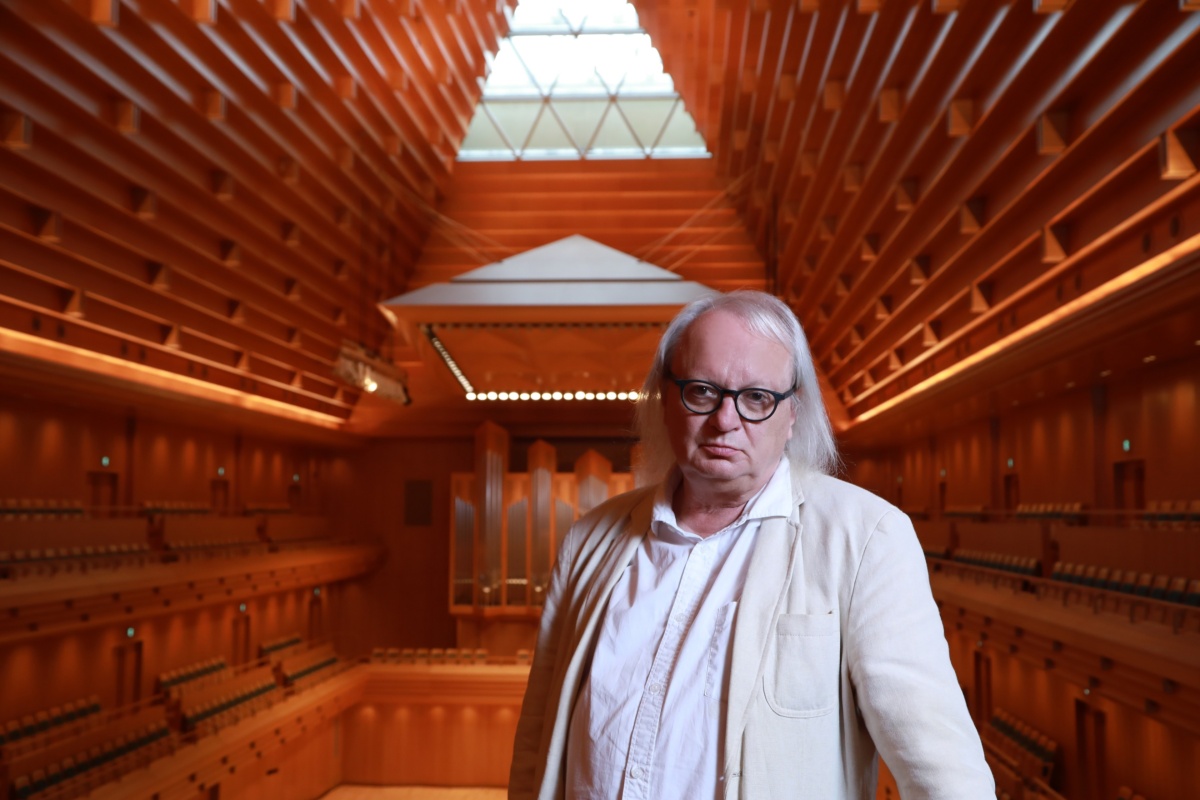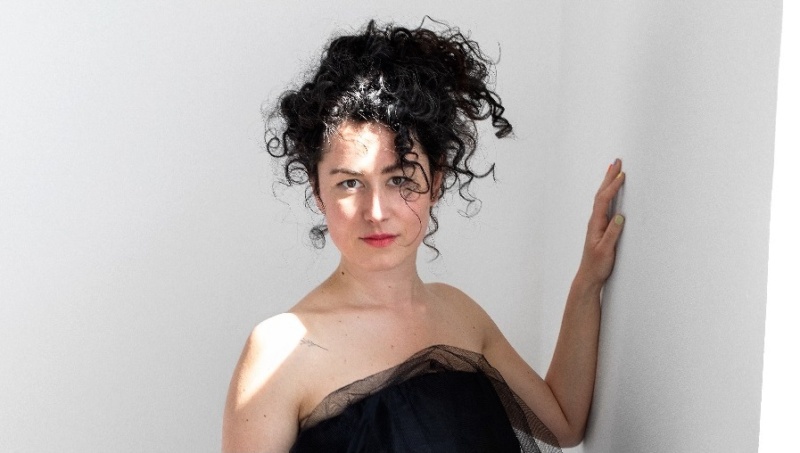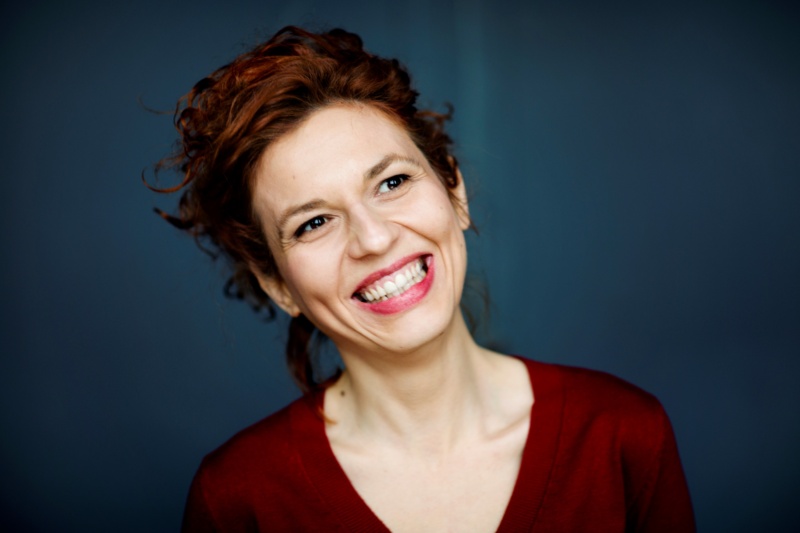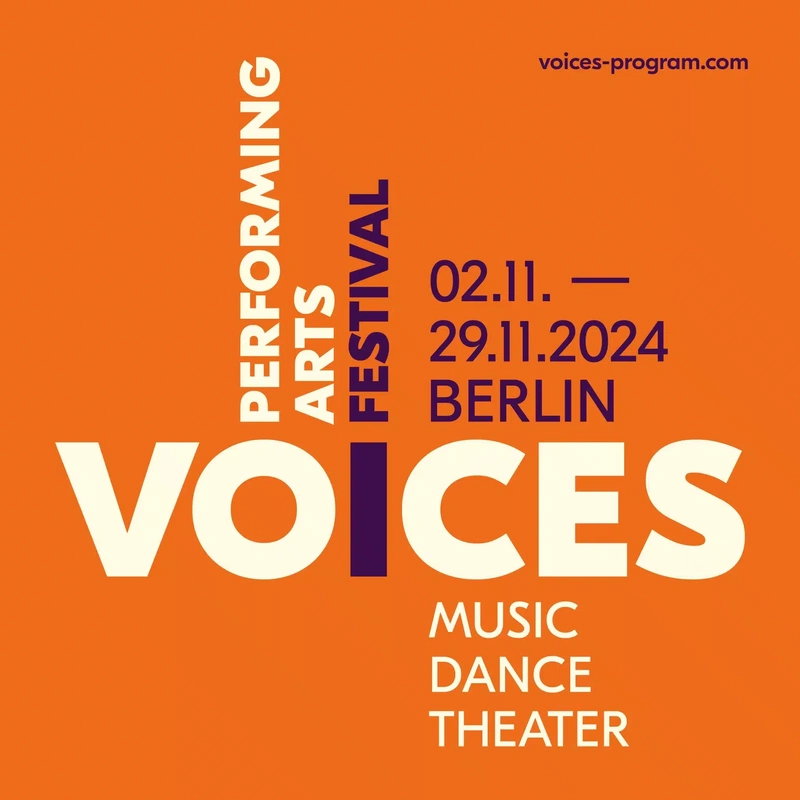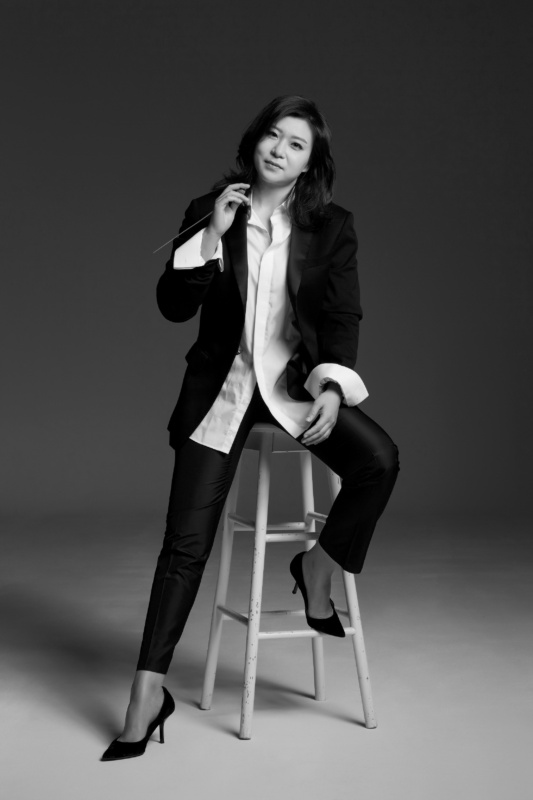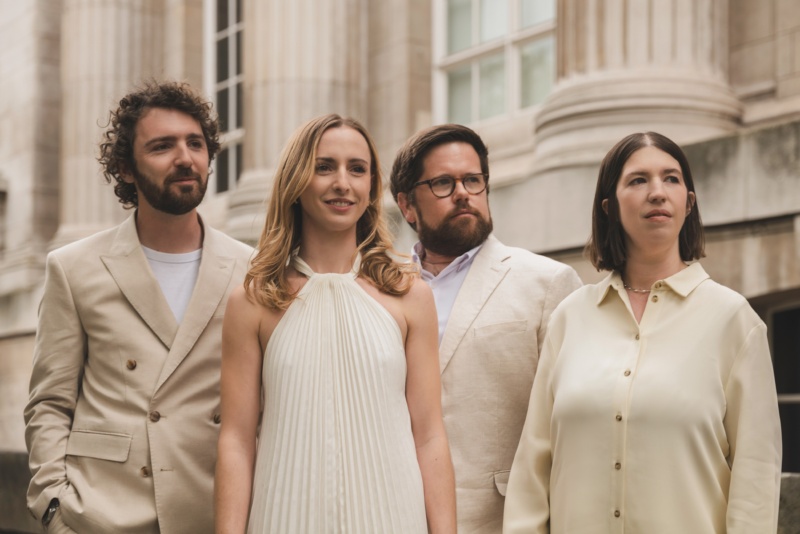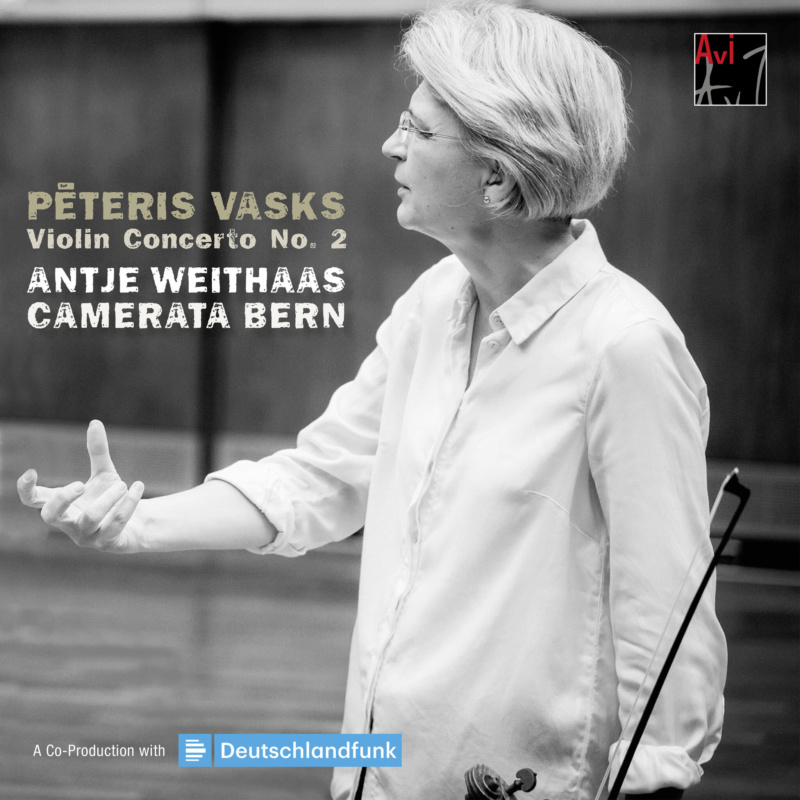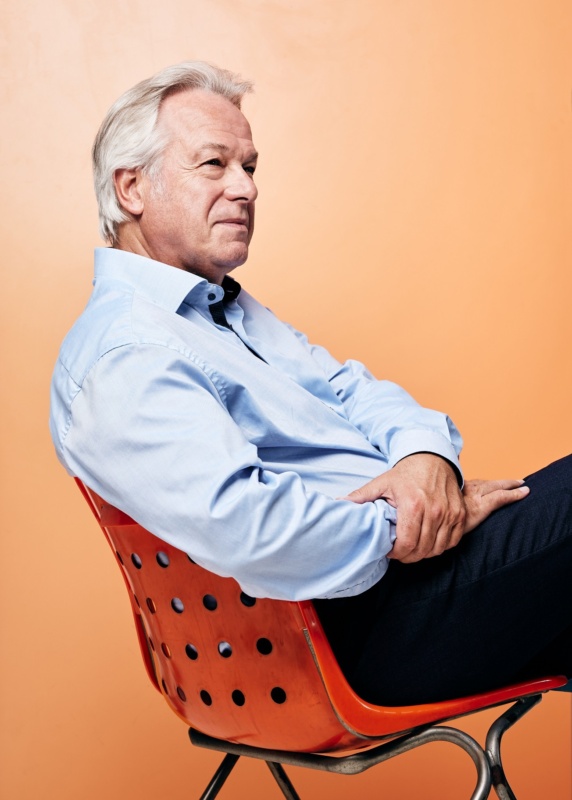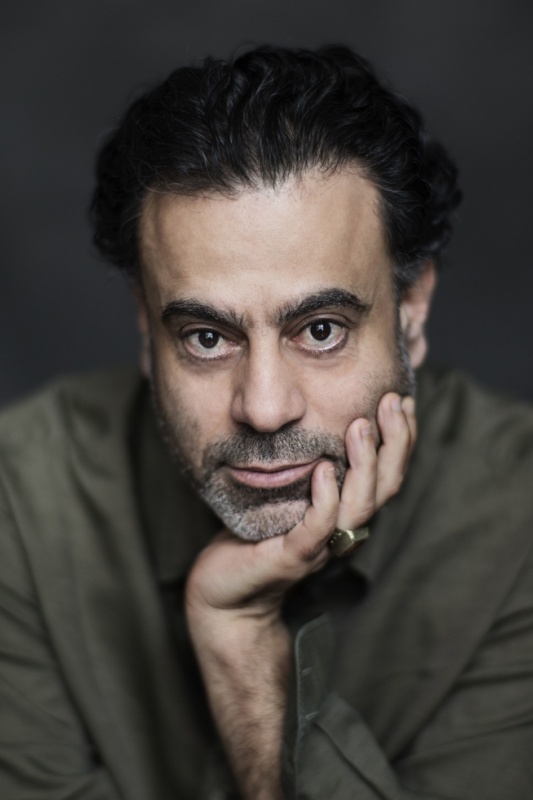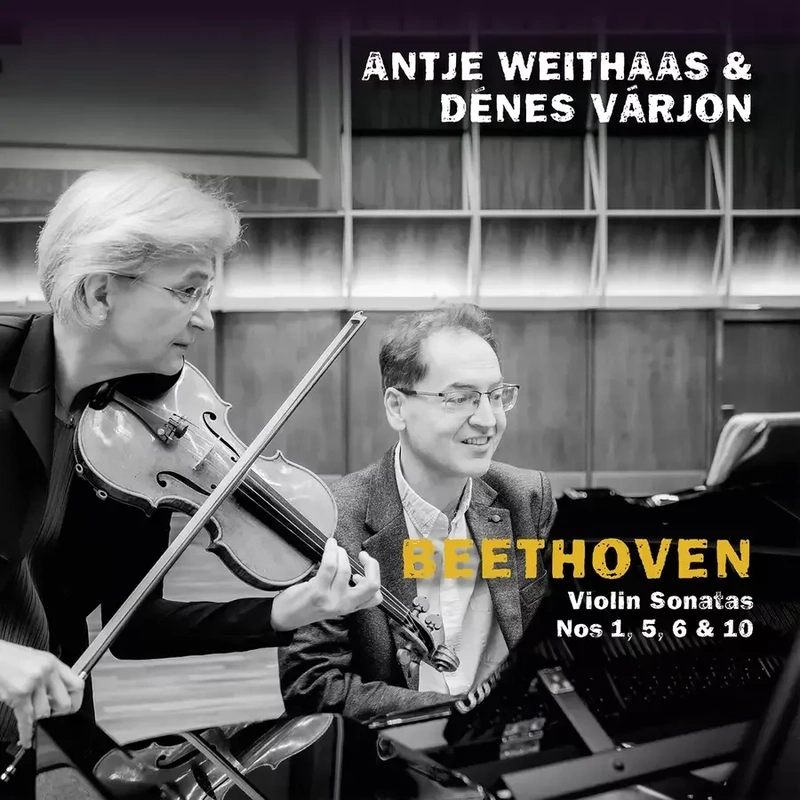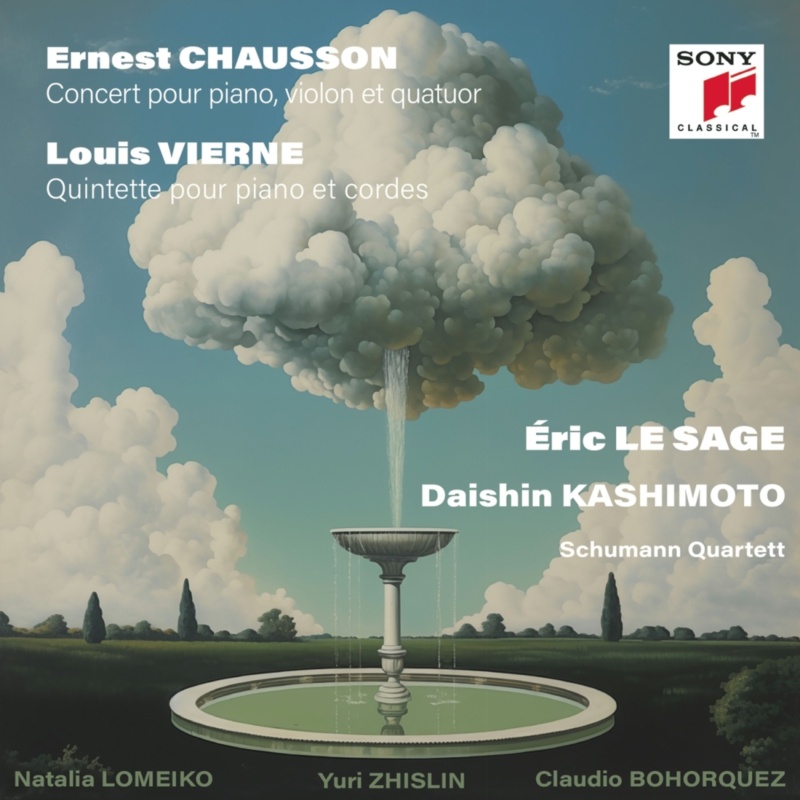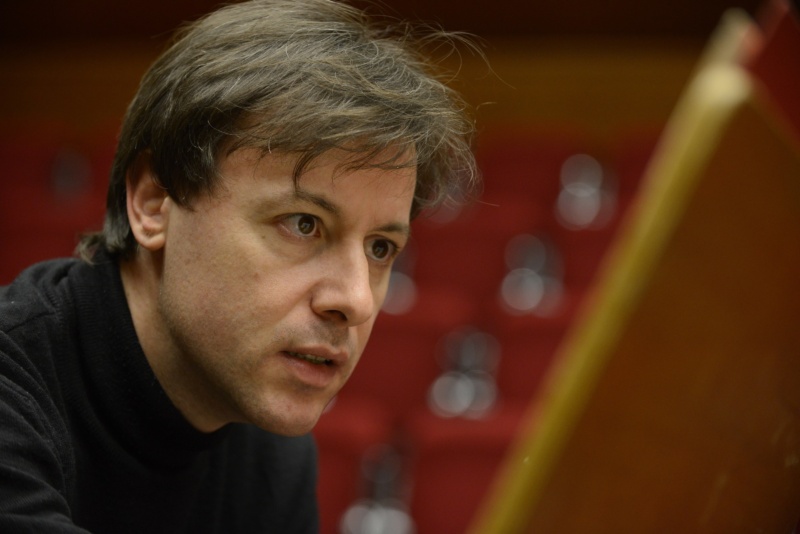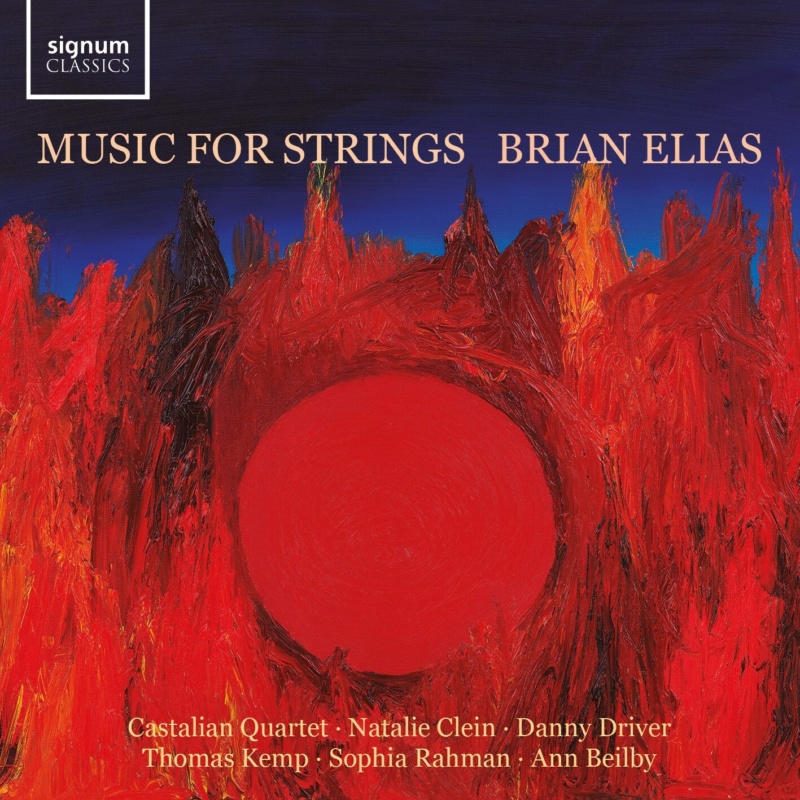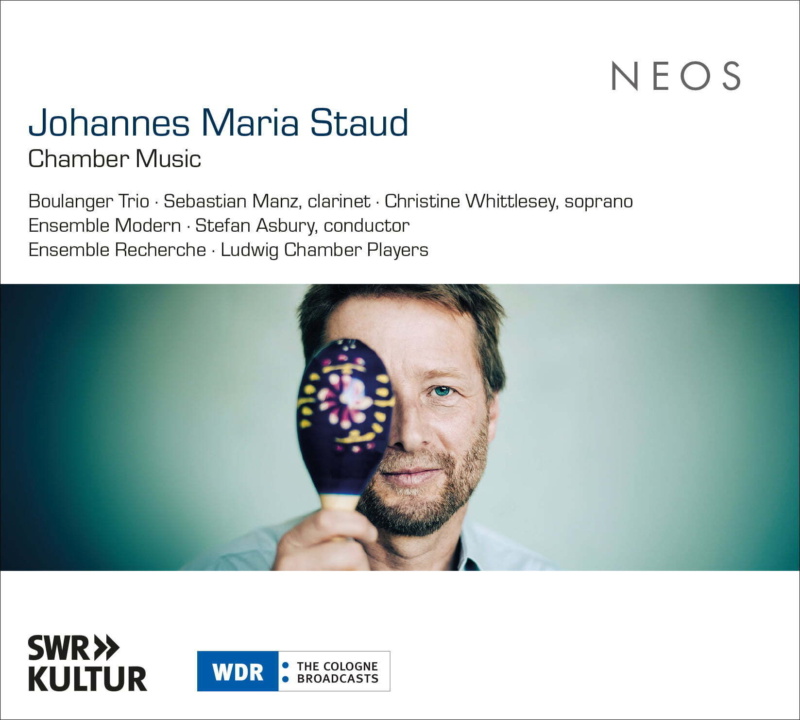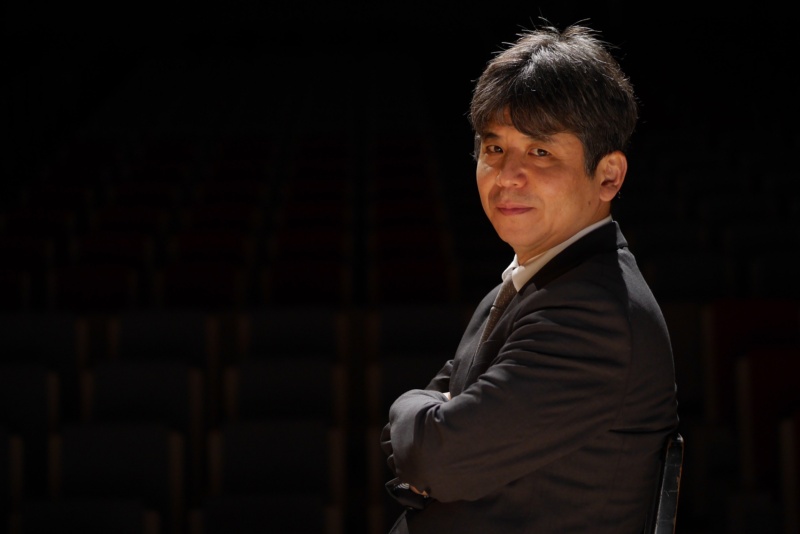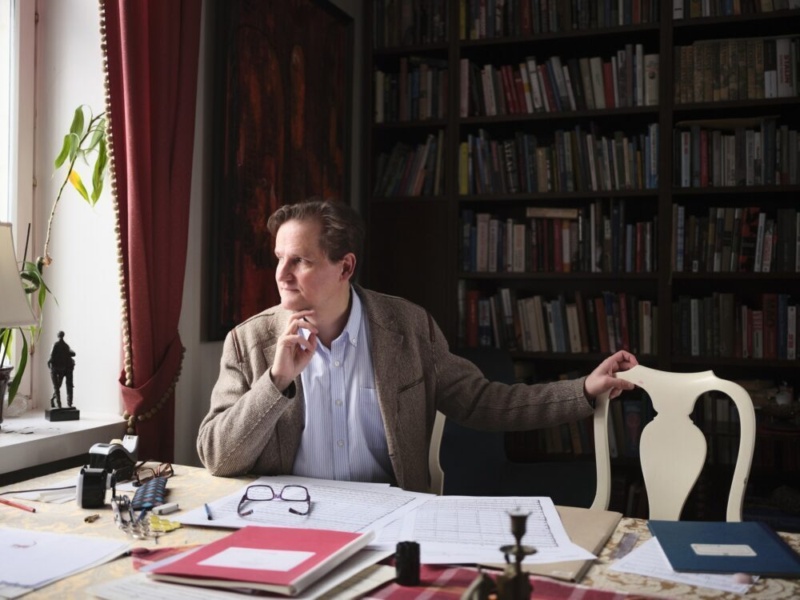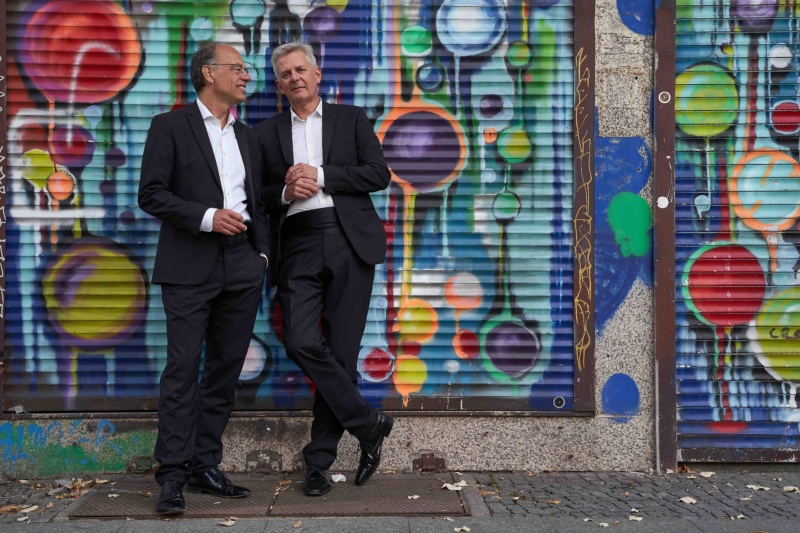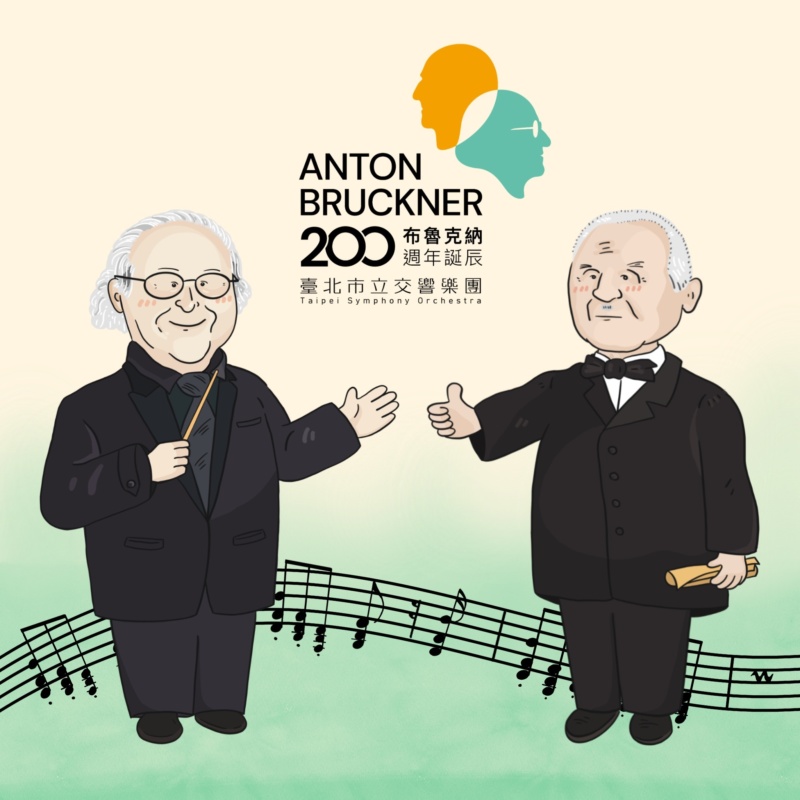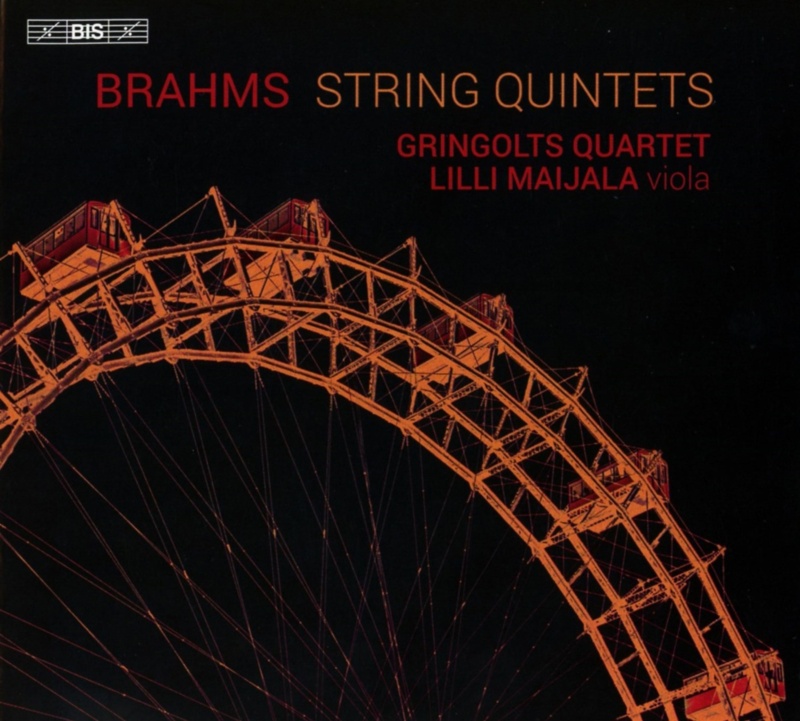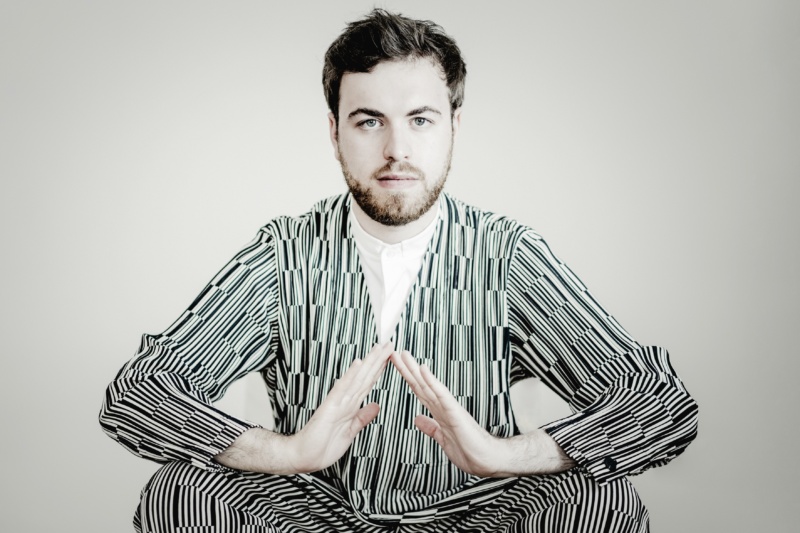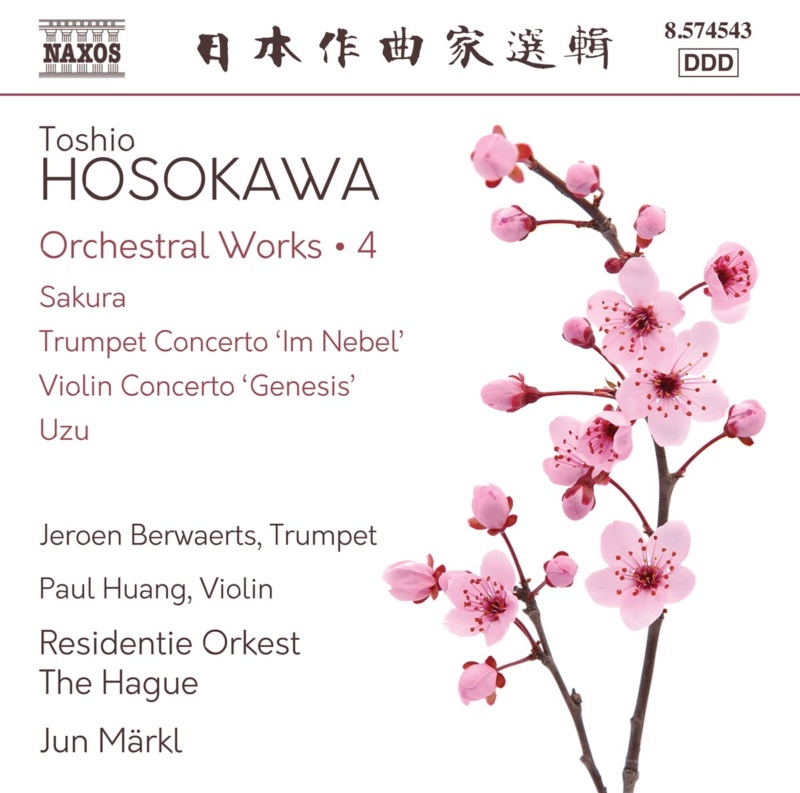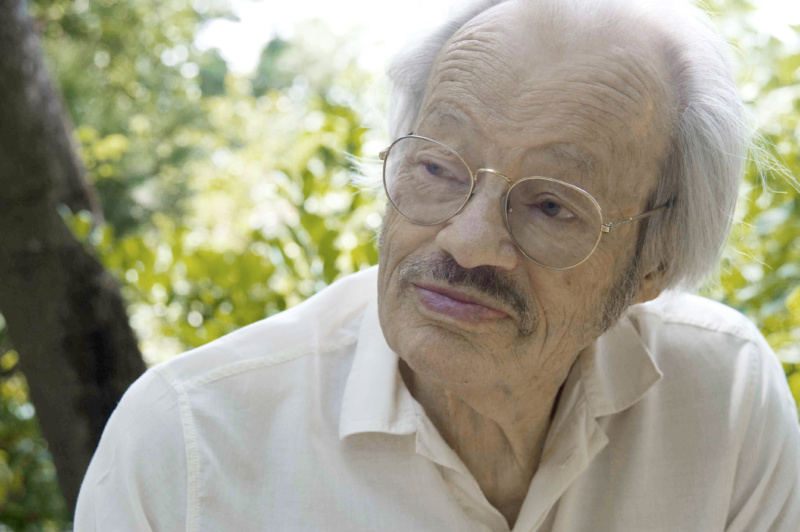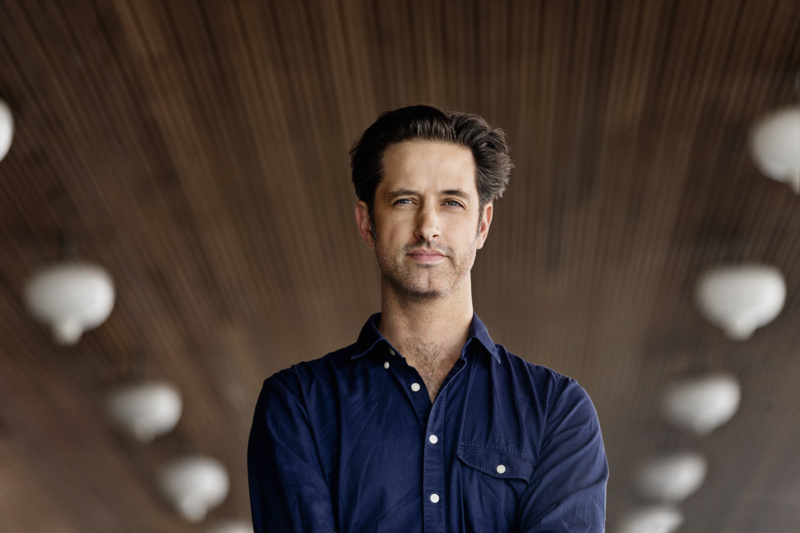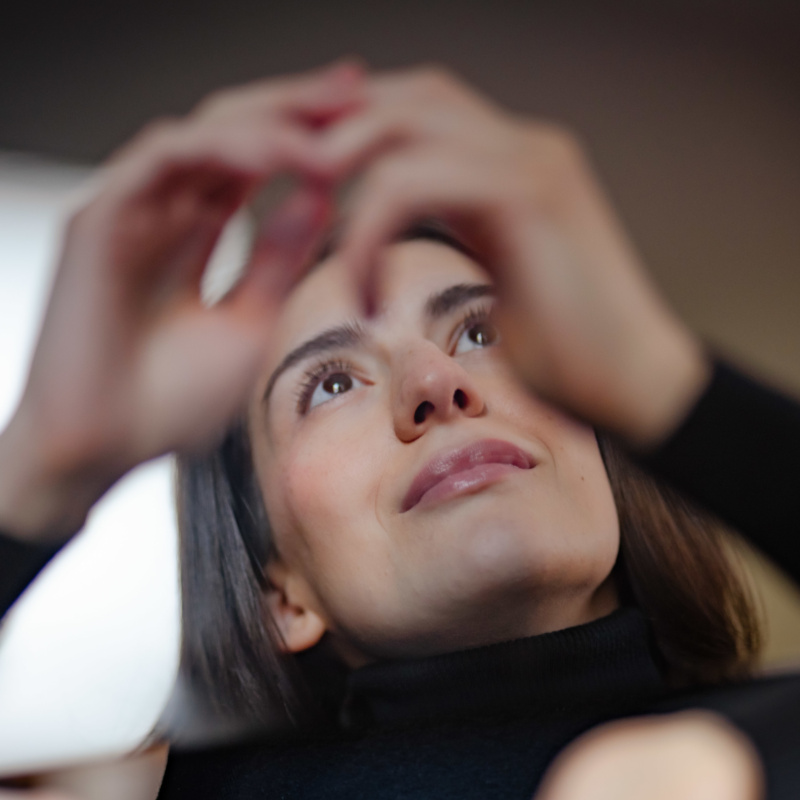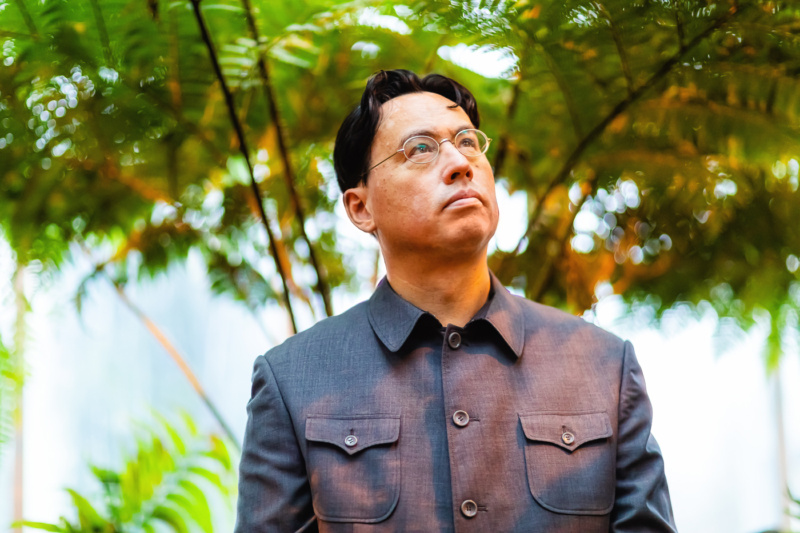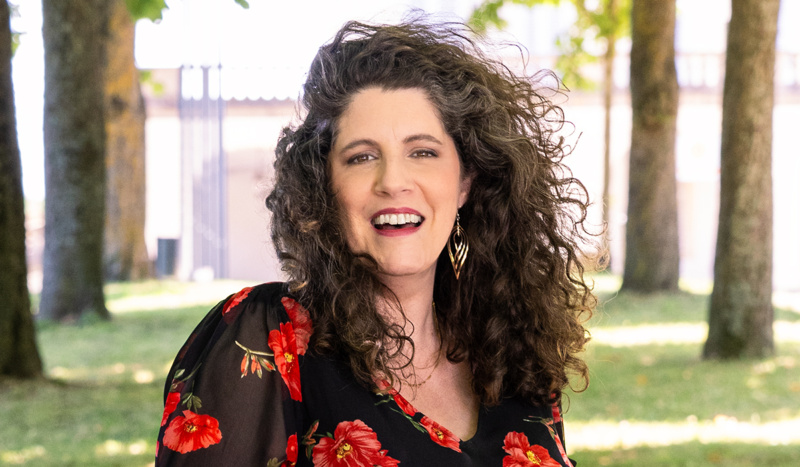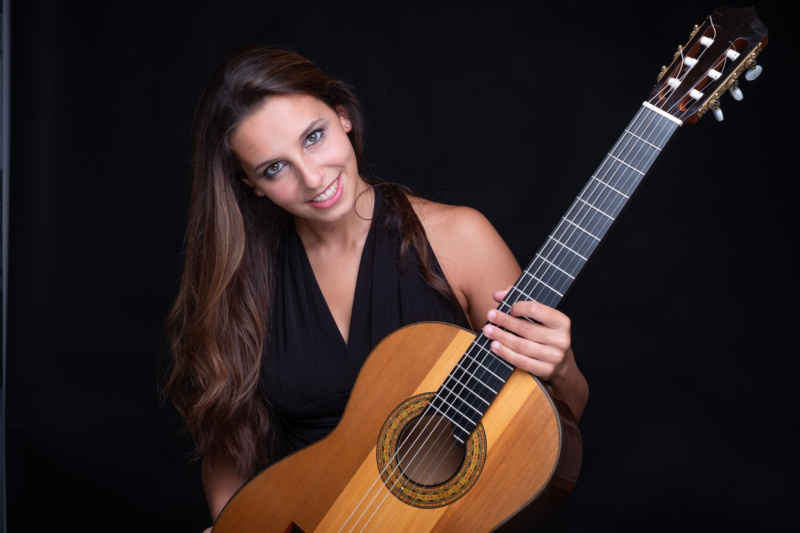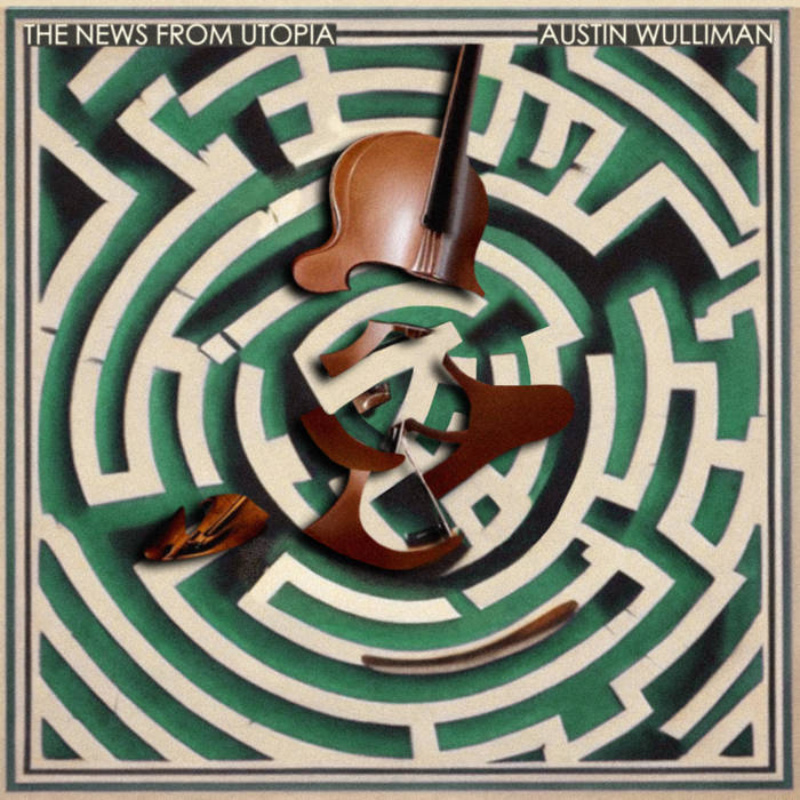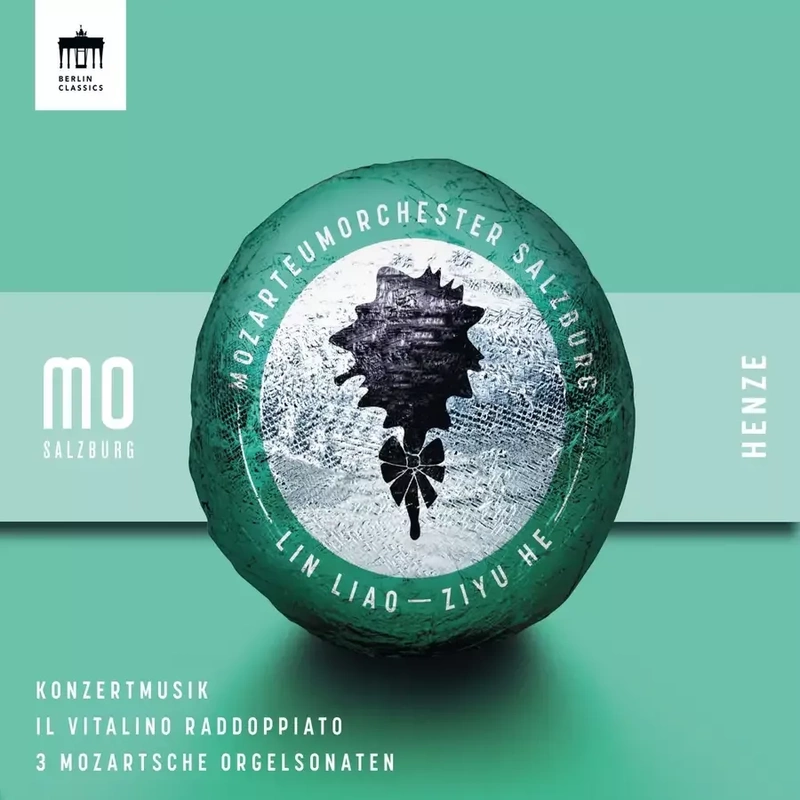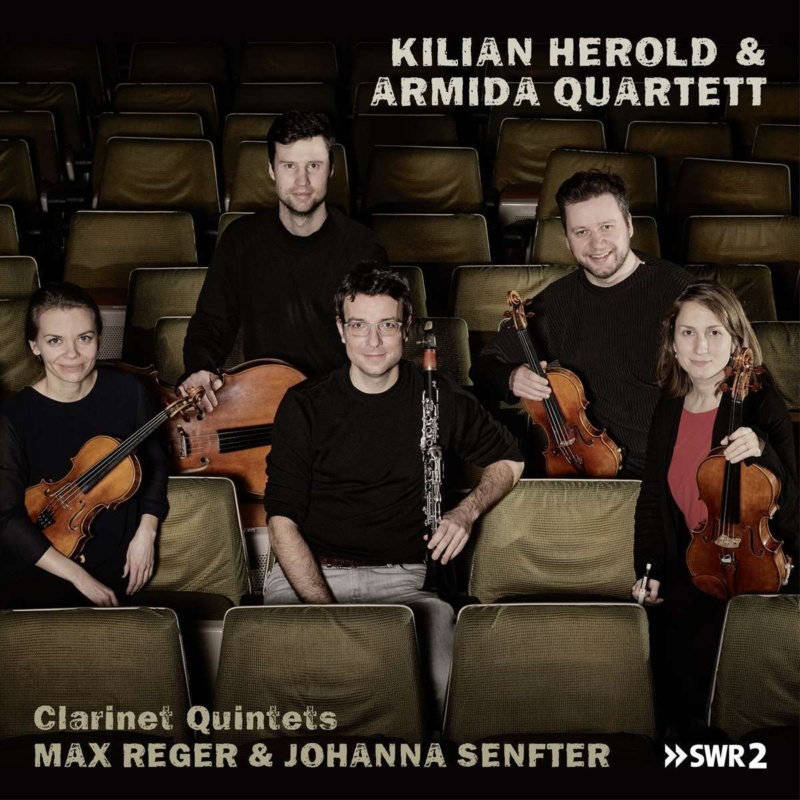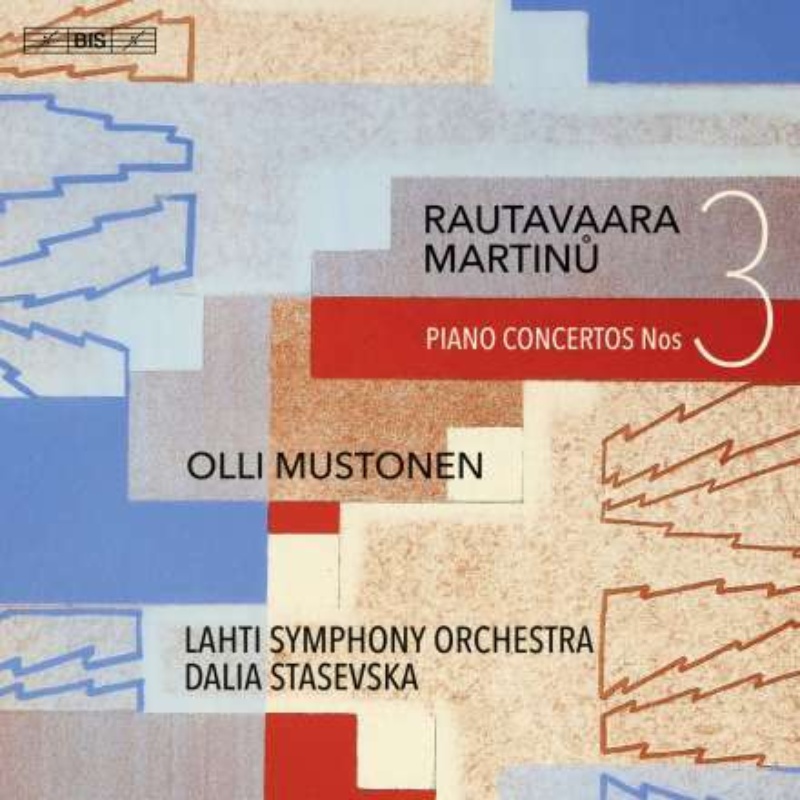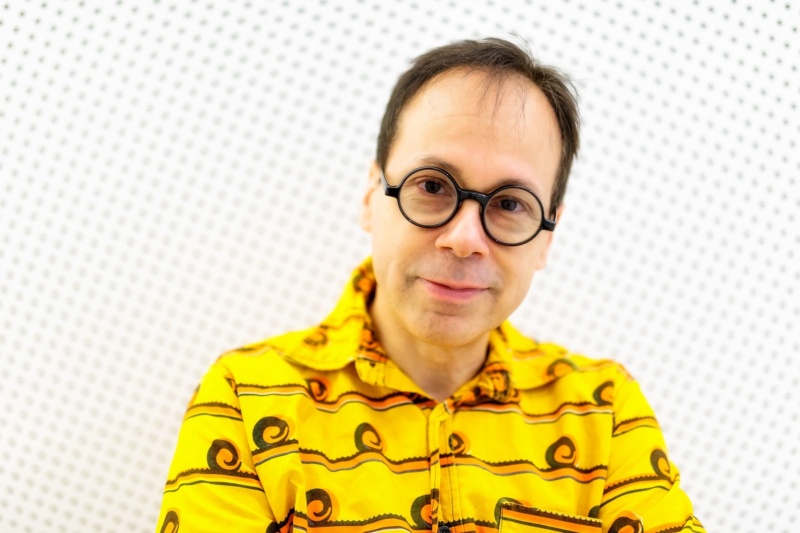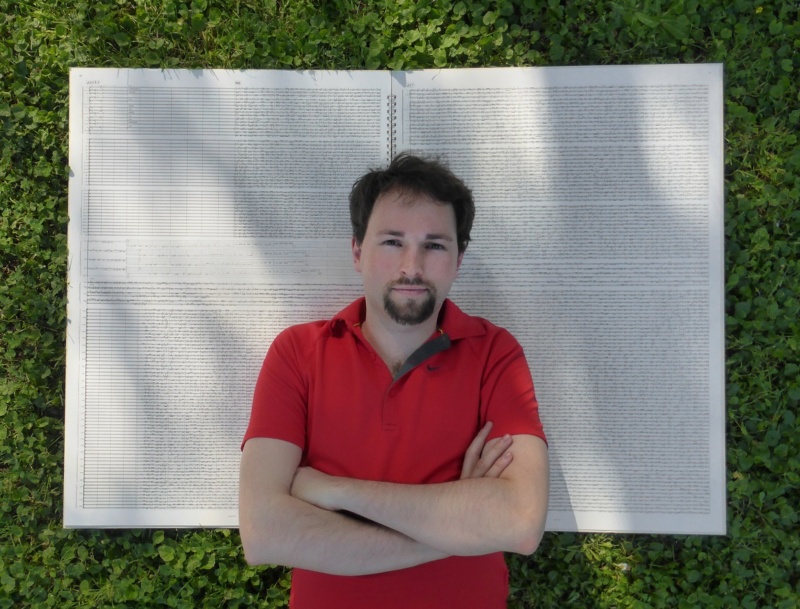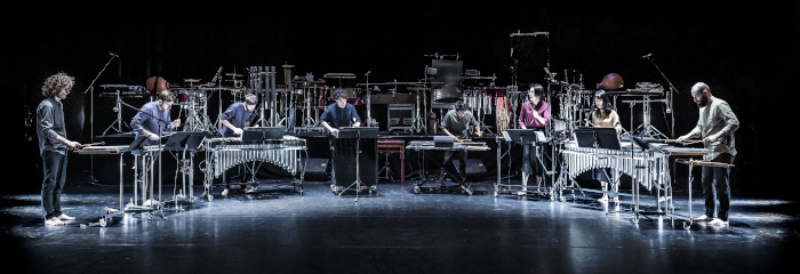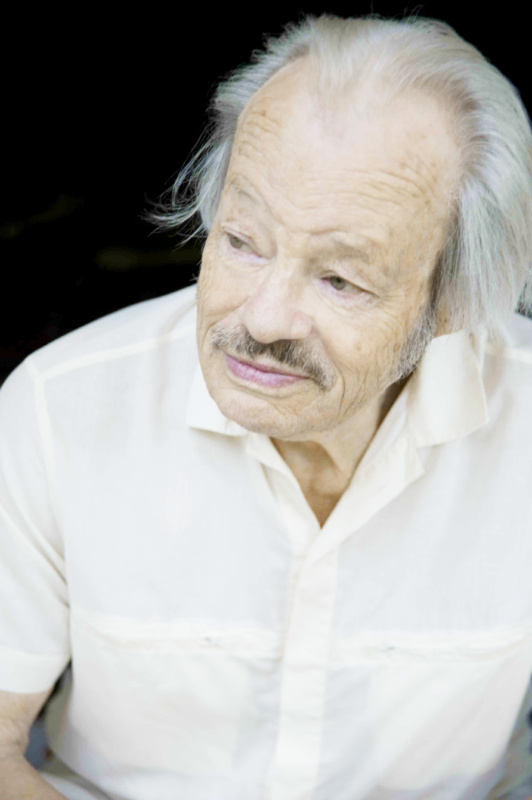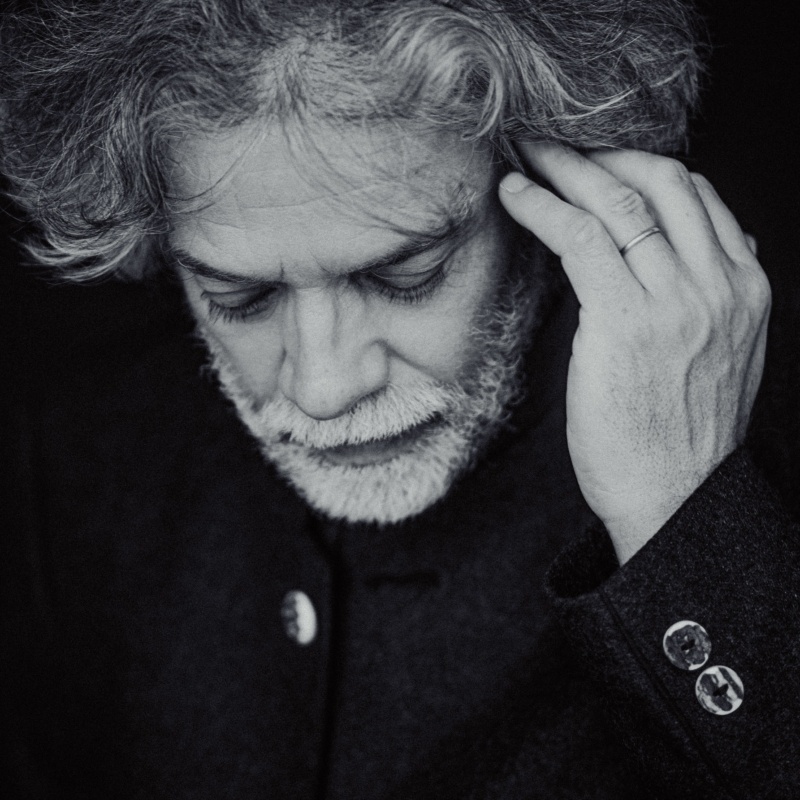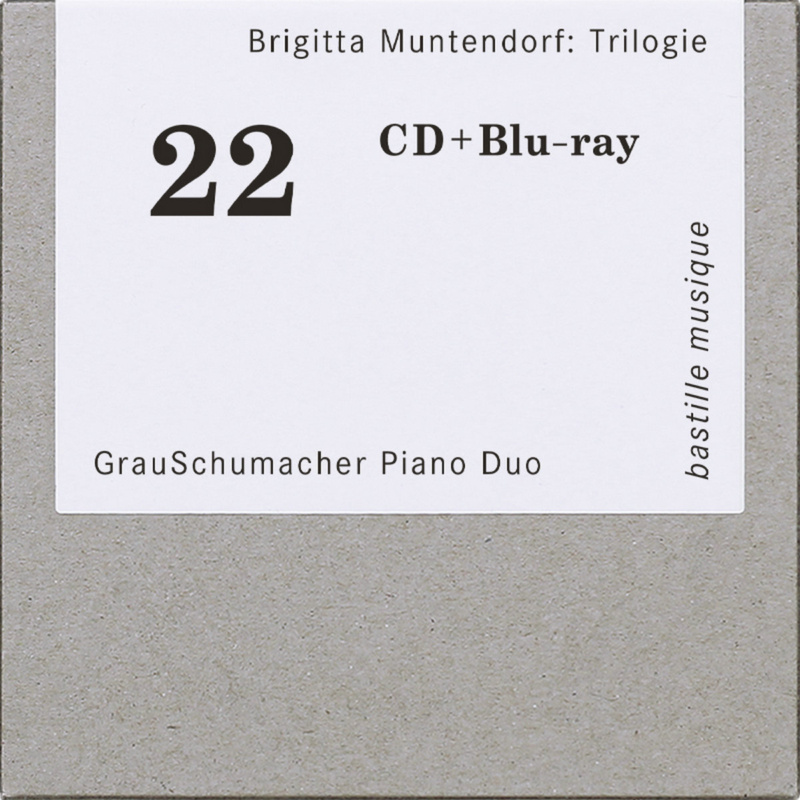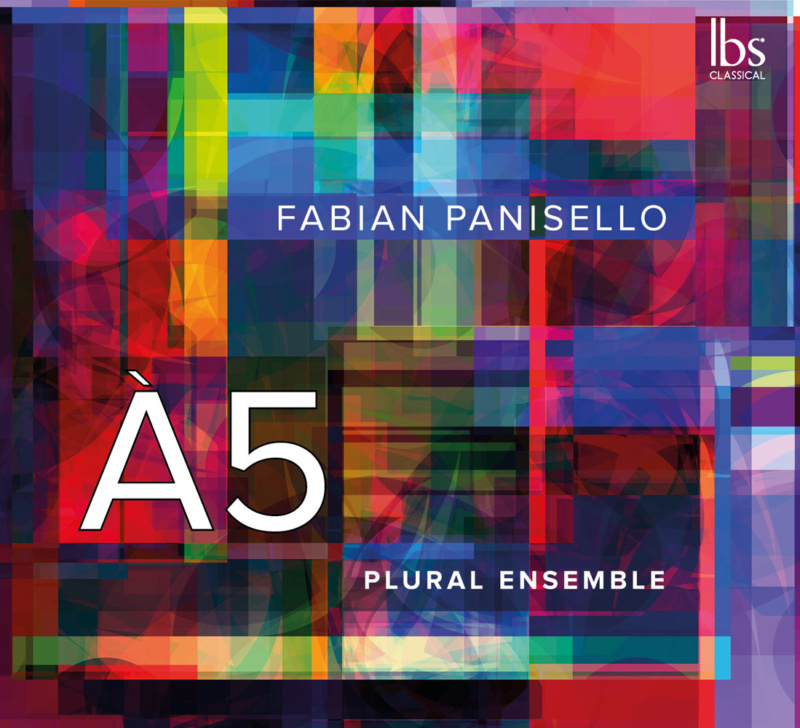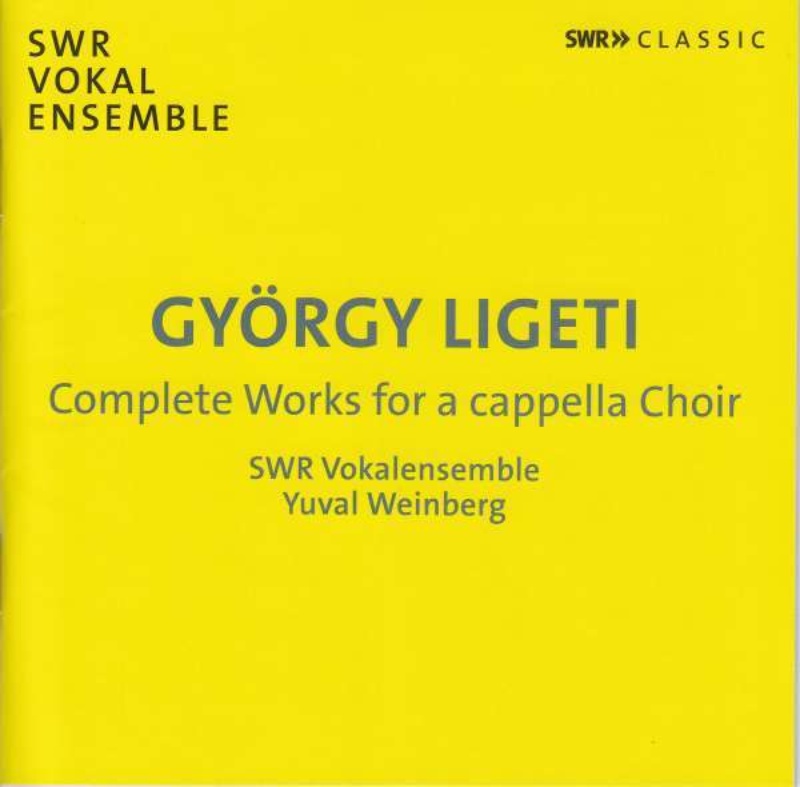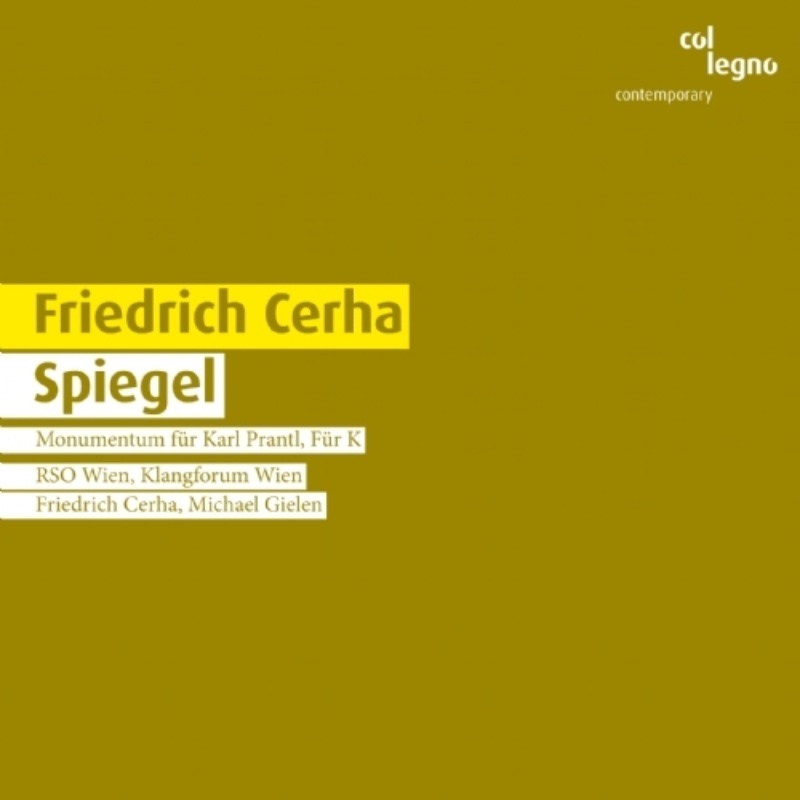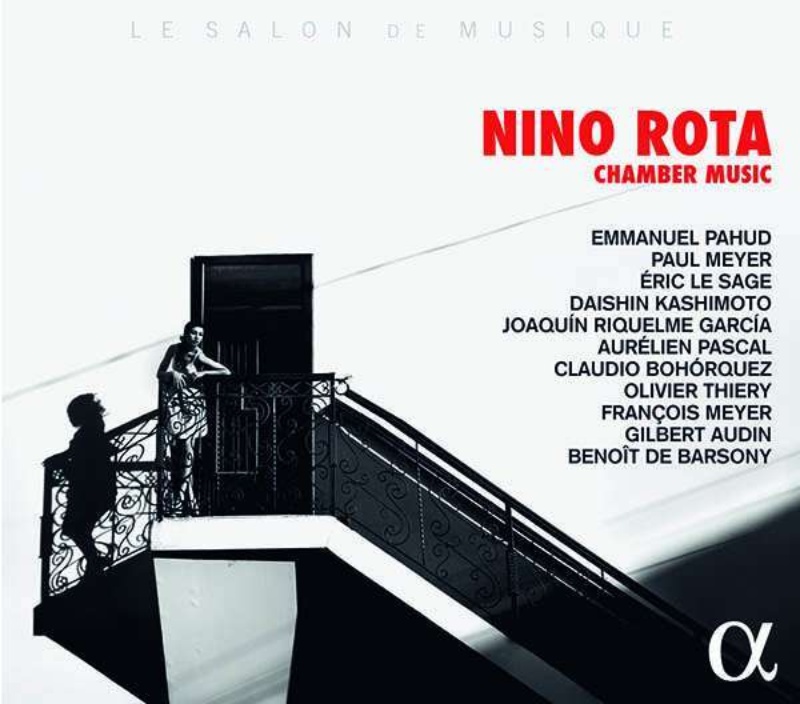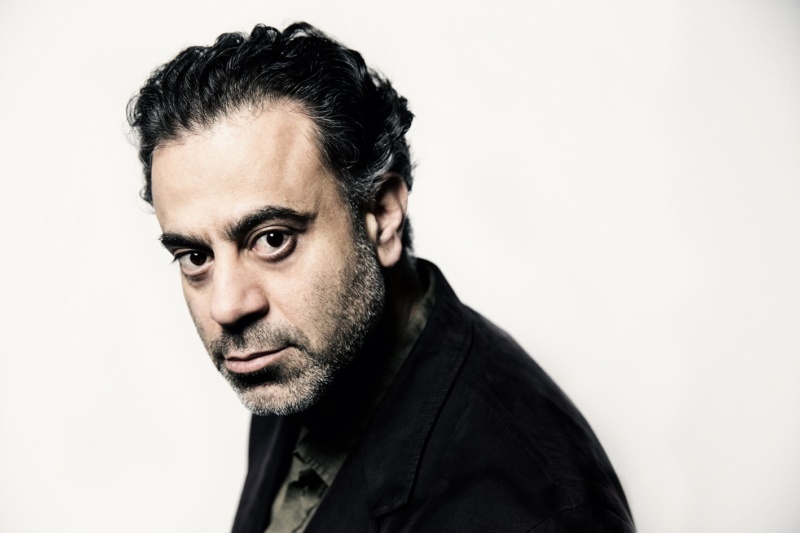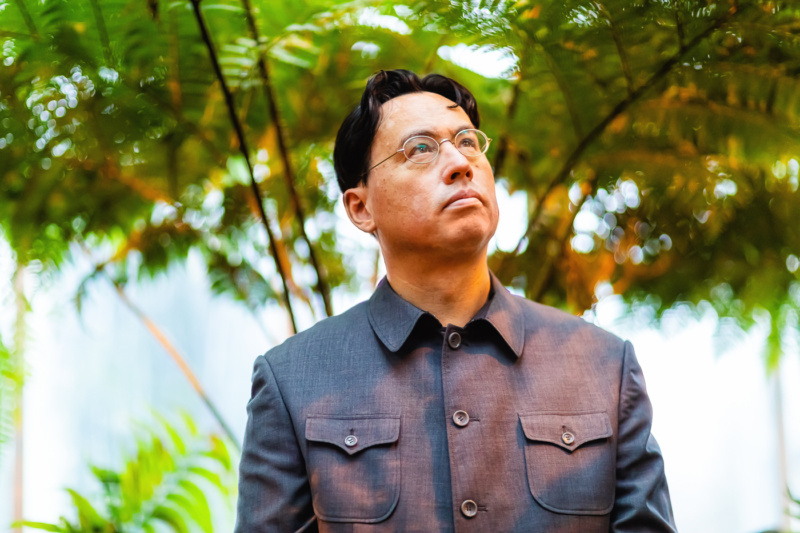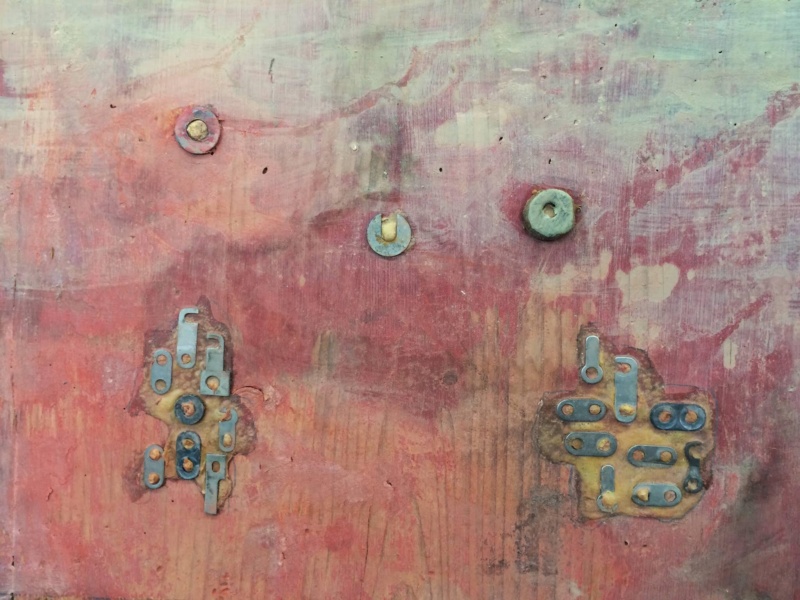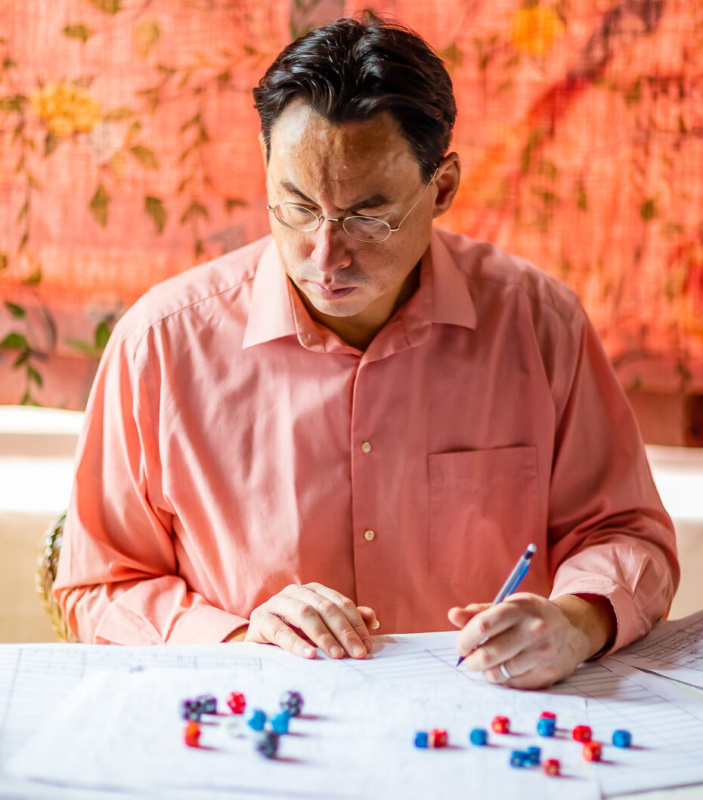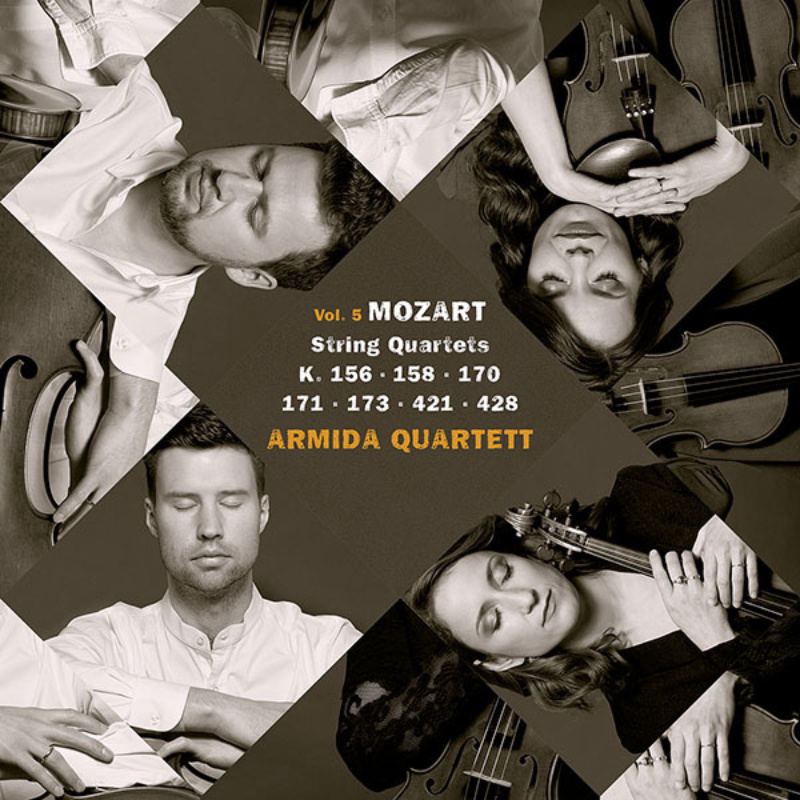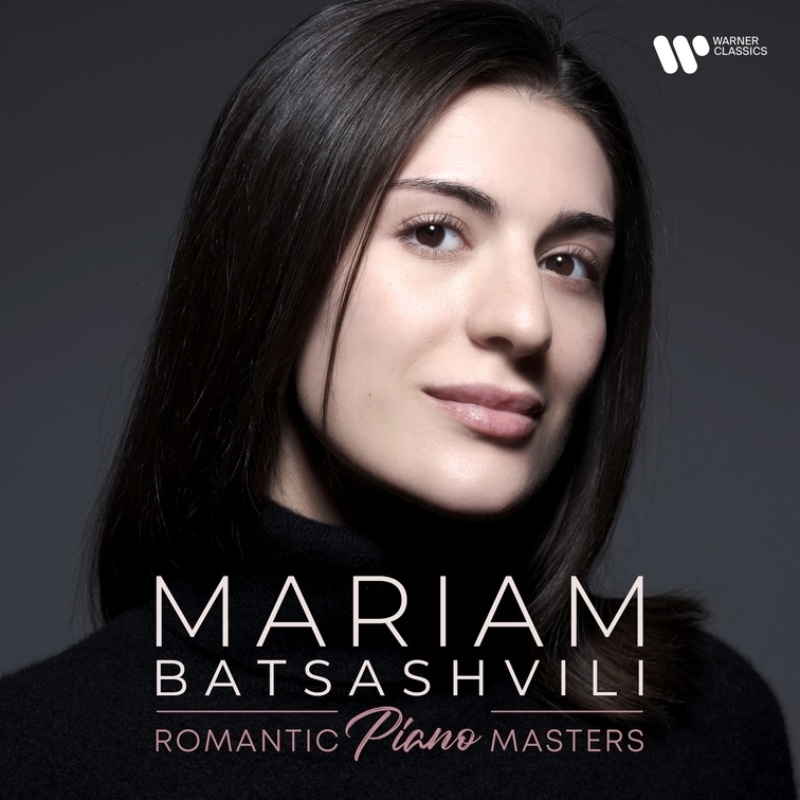Fundamental questions about space and time are keeping Philippe Manoury busy: his “Köln Trilogy” is a large-scale spatial-triptych that scrutinises the architecture of modern concert halls and orchestral spatial concepts from an aesthetic point of view, turning them into compositional material. The first part of the trilogy, Ring, received its world premiere in May 2016.
The Gürzenich Orchestra Cologne continued the trilogy in 2017 with its performance of In Situ, which was premiered in Donaueschingen in 2013, before a third new composition completed the cycle in 2019. In this interview Philippe Manoury describes his journey of musical discovery and what guides him in his musical research as a composer.
Philippe, you were the portrait composer at the 2014 Wittener Tage für neue Kammermusik. Was that the first time you have been the main focus at a German festival?
At that point yes. It was the first retrospective on such a scale, also including world premieres. Ten years ago my music was practically never played at German festivals. I told a few people about this and two artistic directors answered straight away: Hans-Peter Jahn in Stuttgart and Armin Köhler in Donaueschingen. Fortunately the situation has changed since then.
You grew up in the ‘province’, in the Corrèze département. Did you discover music by chance?
No, there was music at home. But it wasn’t the kind of music that I compose these days. My father played the accordion and was a folklore specialist of the Massif Central region. In this rural setting there weren’t any points of contact with classical culture or art music. When I say that I cannot help thinking that there’s a social appropriation to music, which was always associated with the ruling classes, first with the nobility and then with the middle classes. When we moved to Paris – I lived in the countryside until the age of seven – I was exposed to more music albeit in a very special way. Music became my refuge. I was a child accustomed to country life and Paris, and in particular my first contact with school, was therefore a great shock. Music was a way of escaping from the dark and narrow world that I associated with school.
You began your musical training in the early 1970s at the Conservatoire de Paris. What was the Paris music scene like at that time?
The stuffy atmosphere of the interwar period was still at large with regards to music education. Composers who are recognised as important figures nowadays – I’m talking about the generation from the 1950s including Stockhausen, Boulez, Berio, Nono, Ligeti – didn’t feature in education at all. As students we studied them outside the classroom, that wasn’t forbidden, but in composition and music theory classes they were never discussed. The standard of academic education was good if not very good but it focused completely on the traditional tonal concept and had a very French bias. I remember the great paragon in composition classes was still Gabriel Fauré who was defined as the ultimate high point in harmonic development. Composers such as Richard Strauss, Mahler or early Schönberg – even late Wagner – were not taught. French neoclassicism with Cocteau as the main protagonist and the associated anti-German stance was still very of the moment. Still, there was Messiaen who enjoyed a certain prestige. Boulez didn’t live in France. Xenakis and Pierre Schaeffer’s Groupe de recherches musicales (GRM) were present and spectralism was just emerging.
When did you discover electronic music?
That happened during my studies at the conservatoire. In those years students composed either for electronics or instruments. There was a strict division between the two. I found myself in a dilemma because with my traditional training I didn’t know anything about the electronic processes that I felt drawn towards. I was enrolled as a student in Pierre Schaeffer’s GRM class. But the anticipated light bulb moment never came. I was never able to warm to this purely intuitive aesthetic of musique concrète that refrained from using theoretical principles. The person who showed me the way was Stockhausen. He came to Paris every winter and gave concerts. That’s how I witnessed the French premiere of Mantra, and heard Kontakte, Hymnen, Telemusik, Gesang der Jünglinge, all of them extremely impressive works. And I discovered that someone hadn’t just bridged the gap between electronic and acoustic music but had done this within a work and, as in Mantra, in real time. This really did release shock waves. Real time was certainly still very rudimentary back then but I discovered this world through Stockhausen. I always say that Stockhausen is for electronic music what Monteverdi is for opera. He didn’t invent it but he was the first person to develop a strong vision for it.
Music in real time (La musique du temps réel) is the title of your book that was published in 2012 containing interviews with Omer Corlaix and Jean-Guillaume Lebrun. It seems to me that you have had a great influence on this concept. What does it mean exactly?
Instrumental music is composed in a “divergent time”, that is to say the time needed to conceive and write the work is not the same as the length of the finished piece. But as soon as these compositions are performed we move into real time. The notes that were recorded on the paper lead to a production of sounds that have a birth, a life and a death, that are absolutely unique and unrepeatable. There are two sides to time, the divergent time of the compositional process and the real time of the performance. The development of very powerful computers suddenly resolved this situation in the 1970s: the notes are not necessarily predetermined any more in all their components but calculated in the moment when you hear them. While this is happening we can work on them, change and control them just like an instrumentalist would do with acoustic music. The following situation can describe music in real time: a machine calculates notes with a speed that our ears cannot detect. So I didn’t invent the term, it comes from the world of science. Let’s put it this way: I have theorised aspects of this idea in the field of composition and one of the most obvious of these aspects is the reintroduction of performers into electronic music.
Maybe we can come back to Witten to illustrate this and in particular to the world premiere of Le temps, mode d’emploi for two pianos and live electronics with the GrauSchumacher Piano Duo. What was this collaboration like?
I was working with two formidable pianists – they don’t just play fantastically well, you can also feel their mutual understanding. This unity is immediately noticeable just like with an orchestra that has played under the same conductor for many years and a blink of the eye is enough for the musicians to understand what is wanted. The GrauSchumacher Piano Duo had a purely musical approach, that is they gave themselves over to the music and tackled it in the same way they would any other work. Of course I can explain the details of my composition but if this musical spark in which the music is expressed isn’t there, something very fundamental is missing. It was immediately clear with the duo. In Le temps, mode d’emploi the electronics generate structures that are regenerated every time. I wrote the piano parts in such a way as to afford the pianists the freedom to react to the electronics because they cannot foresee in detail when moments of great silence or great activity will occur.
In recent years you have composed a series of orchestral pieces that demonstrate your affinity to large-scale formats, to orchestras. Do you see yourself as an “orchestral composer”? And do you associate yourself with any particular school of thought?
Certainly I see myself as an orchestral composer because I often say that the two media that interest me the most are large orchestras and electronics. The latter is a kind of new orchestra for me, by the way. Large orchestras offer a multitude of sources and I like this pluralism of voices. Writing for orchestras is like playing chess: the combinations are infinite even if we do know all the rules. However it isn’t so easy to pigeonhole me. I don’t belong to post-serialism or post-spectralism, and I don’t have noise music tendencies or compose neotonally. I would say that my first influence as a composer was Wagner. The plasticity of his music, in which the polyphony expands and tightens, and the lengthening and contraction of time never fail to impress me. Debussy remains important as the one who did away with hierarchies in orchestras. The strings no longer dominate and he distributes the weight in a new way. And Mahler should also be mentioned with his suspended time and unique counterpoint. I’d like to mention Boulez and Ligeti from among the contemporary musicians. Boulez made interesting discoveries with the orchestra with regards to time. Faced with the great variety of elements, of individuals in the orchestra he found ways to allow each group to react with a precise temporality. For example in Répons the soloists are grouped around the conductor and can act freely while the orchestra plays more metrically. This mutual penetration of the temporal layers is often overlooked but it gives his music a unique dramatic tension. Ligeti found poetry in time and space that is very attractive. The music sometimes seems to come from far away; sometimes it seems to be frozen like in a hallucination. All in all one could say that what interests me the most about orchestral music at the moment is the sound-space relationship.
Interview: Sarah Pieh | Translation: Celia Wynne Willson
